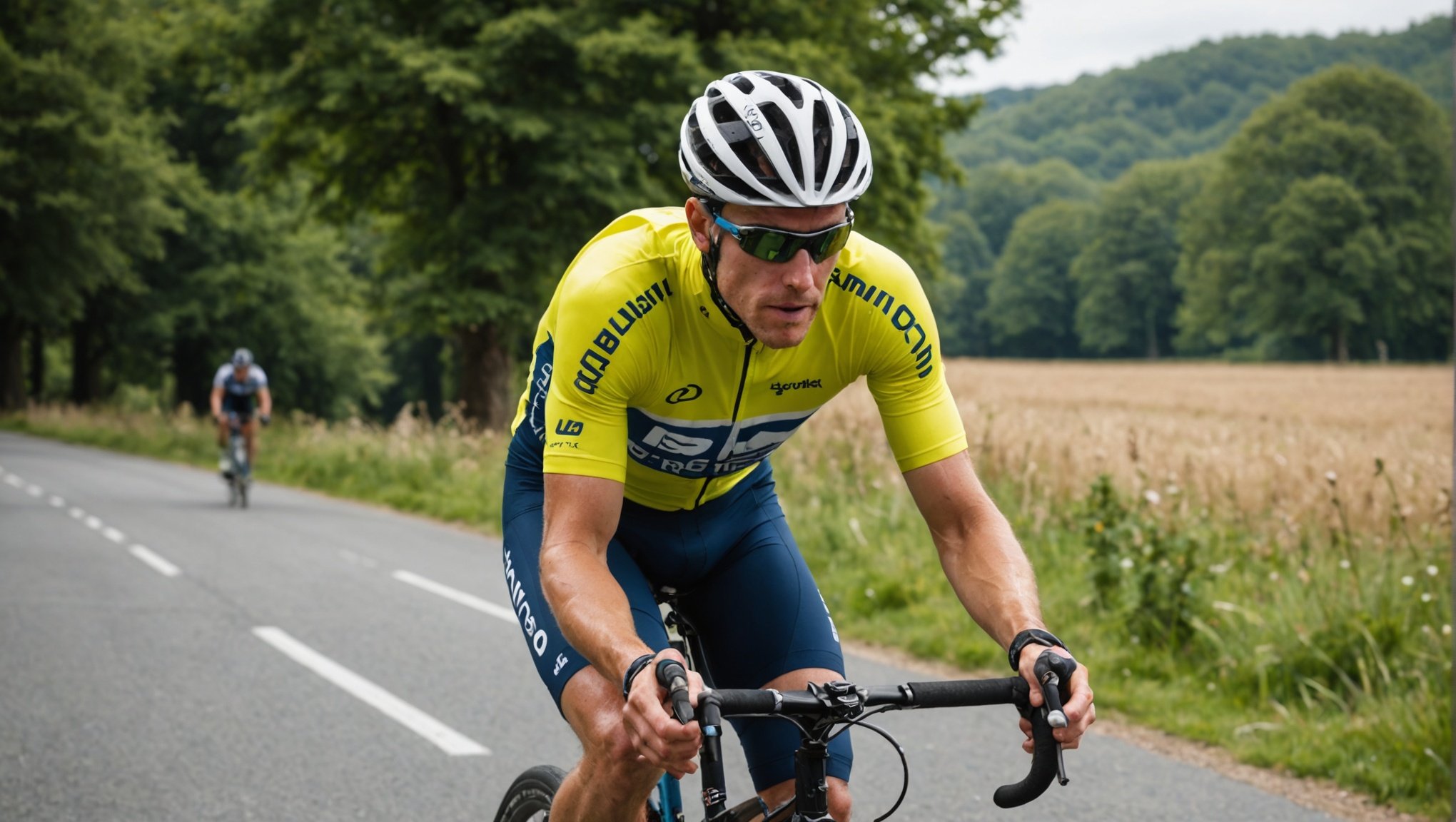As an avid cyclist, one of the most crucial elements to consider during a ride is hydration. Whether you’re training for a long-distance race or simply out for a pleasure ride, maintaining adequate hydration levels is vital. Not only will it ensure that your body performs at its optimum level, but it can also prevent the onset of fatigue, helping you cover longer distances. However, staying properly hydrated while cycling, especially in the heat, is not as straightforward as it may seem. Here, we will explore the various aspects of hydration, from understanding why it’s crucial to how you can avoid dehydration during your rides.
Understanding the Importance of Hydration
Before we delve into how you can maintain your hydration levels, it’s essential to understand why hydration is so critical during cycling. When you ride, especially for long distances, your body generates energy. This, in turn, causes your body temperature to rise, and to cool down, your body produces sweat. This process is exacerbated when you’re cycling under the heat.
Topic to read : Are There Effective Stress-Reduction Techniques Specifically for UK University Students?
As your body sweats, it loses water and essential electrolytes, notably sodium. These losses, if not replaced, can adversely affect your performance and even lead to adverse health effects. Dehydration can trigger symptoms such as dizziness, lethargy, confusion, and in severe cases, it can even lead to heat stroke.
How Much Should You Drink?
Now that you understand the importance of staying hydrated, the next question you’ll probably ask is, “How much should I drink?” Well, there is no one-size-fits-all answer to this question as it depends on several factors including the intensity of the ride, the distance you’re covering, your body mass, and the weather conditions.
Also read : What Nutritional Strategies Can Help Improve Concentration for UK Office Workers?
However, as a general rule, you should aim to drink around 500-1000 ml of fluid per hour during a long-distance ride. Start your ride fully hydrated, and consider taking a few sips of water every 15 to 20 minutes, rather than waiting to feel thirsty. Thirst is a lagging indicator of dehydration, so waiting until you’re thirsty to drink can mean you’re already dehydrated.
What Should You Drink?
While water is the most straightforward choice for keeping hydrated, it may not be the most effective for long-distance rides. When you sweat, your body loses not only water but also electrolytes, notably sodium. Drinking only water, especially in large amounts, can dilute your blood sodium levels leading to a condition known as hyponatremia, which can be dangerous.
Hence, for long rides, consider drinking an electrolyte-based sports drink. Products such as Veloforte offer natural, energy-packed hydration solutions that replenish both water and electrolyte losses. These drinks often contain an ideal balance of sodium, potassium, and other minerals, along with carbohydrates, which can provide an energy boost during your ride.
Eating and Hydration
While drinking sufficient fluids is crucial, eating the right foods can also significantly impact your hydration levels. Consuming foods with high water content can contribute to your hydration status. Fruits like watermelon, cucumber, and oranges are excellent choices as they contain significant water and are packed with essential vitamins and minerals.
Moreover, it’s also crucial to include some sodium in your pre-ride meals, especially if you’ll be riding for several hours or in the heat. Sodium helps to retain water in your body, thus preventing dehydration.
Hydration Strategies for Different Weather Conditions
The weather can significantly impact how much you need to drink during your ride. In hot weather, your body will sweat more to cool down, increasing your fluid and electrolyte losses. Therefore, it’s crucial to drink more under these conditions, and supplement water with electrolyte-rich sports drinks.
In contrast, in cooler weather, you might not feel as thirsty or sweat as much, but that doesn’t mean you can neglect your hydration. You should still aim to drink regularly, albeit in lesser quantities than in hot weather.
Hydration is an integral part of any cycling regime, especially for long-distance rides. Understanding the importance of hydration, knowing how much to drink, choosing the right fluids, eating the right foods, and adapting your hydration to the weather conditions, can go a long way in maintaining your hydration levels, enhancing your performance, and ensuring that your rides are enjoyable and safe.
Hydration Timing and Techniques
Maintaining your hydration level is not just about how much you drink, but also when and how you drink. Starting your bike ride well-hydrated is a strong starting point. You can check your hydration status by observing the colour of your urine. A pale straw colour indicates good hydration, while darker urine may be a sign of dehydration.
Drinking fluids continually during your ride is also crucial. As a good practice, consider sipping small amounts every 15-20 minutes instead of drinking large quantities at once. This helps your body to better absorb the fluids and keep a constant hydration level.
Implementing a hydration schedule can also be beneficial, particularly during long rides. This could include pre-determined drinking stops or reminders set on your watch or cycling computer.
At the end of your ride, it’s essential to replace the fluids lost. One way to calculate this is by weighing yourself before and after your ride. For every kilogram of weight lost, aim to drink 1.5 litres of fluid. However, remember that this is not an exact science, as weight can also be influenced by factors like food intake and metabolic processes.
While sports drinks can be a good source of fluids and electrolytes during rides, over-reliance on them can lead to excessive sugar consumption. Therefore, consider alternating between water and stronger electrolyte drinks, especially during middle-distance or longer rides.
Individualising Your Hydration Plan
When it comes to hydration during British cycling long-distance events, there is no one-size-fits-all approach. Individuals differ in their sweat rates, electrolyte loss, and fluid needs. As such, it’s crucial to customise your hydration strategy to your personal needs.
To get a better understanding of your hydration needs, consider undergoing a sweat test. This can help you determine your individual sweat rate and the amount of sodium you lose in your sweat. With this knowledge level, you can tailor your fluid and electrolyte intake more accurately.
Including a variety of drinks in your hydration plan can also be a good idea. While water is essential, other beverages like electrolyte drinks, coconut water, or even homemade concoctions can add flavour and provide additional nutrients.
Don’t forget that staying hydrated during a long ride is a dynamic process. Listen to your body, monitor your thirst and fatigue levels, and adjust your fluid and electrolyte intake accordingly.
Conclusion
In conclusion, maintaining hydration levels during long-distance cycling is a complex yet vital aspect of the sport. From understanding your body’s unique needs to knowing when and how much to drink, and what to consume, numerous factors contribute to effective hydration.
British cyclists embarking on long-distance rides can benefit from a personalised, thoughtful approach to their hydration strategies. By combining a well-balanced diet, a variety of beverages, including water and sports drinks, regular fluid intake, and an awareness of how different weather conditions impact hydration, cyclists can maintain their performance and enjoy their ride.
Remember, thirst is not always an accurate indicator of dehydration. Keep sipping fluids throughout your ride, replenish lost electrolytes, and pay attention to your body’s signals. With the right hydration plan in place, you’ll be well-equipped to tackle any distance cycling challenge.
At the end of the day, staying well hydrated during a bike ride is crucial for your health, performance, and overall enjoyment of the sport. So, gear up, plan well, and stay hydrated!











